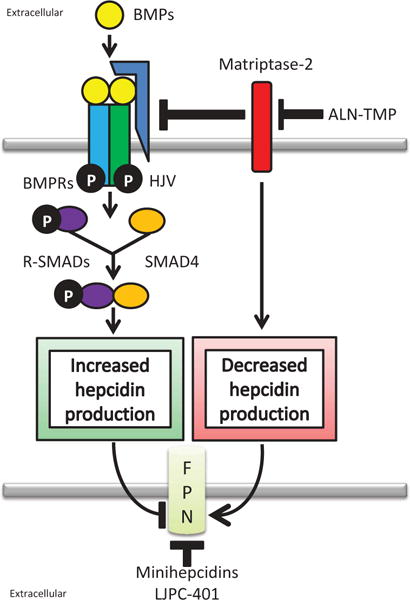Figure 2.

Overview of hepcidin agonists. The bone morphogenetic protein (BMP) pathway stimulates hepcidin production. Secreted BMPs bind to BMP receptors (BMPRs) activating intracellular receptor SMADs (R-SMADs) and SMAD4. SMADs bind to BMP-responsive elements in the hepcidin promoter stimulating hepcidin synthesis. BMP signaling is enhanced by the hemojuvelin (HJV) coreceptor or repressed by matriptase-2 which cleaves HJV and decreases hepcidin production. By regulating hepcidin production, modulation of BMP signaling can regulate the amount of ferroportin (FPN) degraded. Hepcidin agonists aim to increase hepcidin production and reduce FPN. Hepcidin mimetics, such as minihepcidins and LJPC-401, mimic hepcidin while other agonists target the BMP signaling pathways. ALN-TMP increases hepcidin synthesis by enhancing BMP signaling through inhibition of matripase-2. Administration of BMPs, particularly BMP6, also stimulate hepcidin production.
